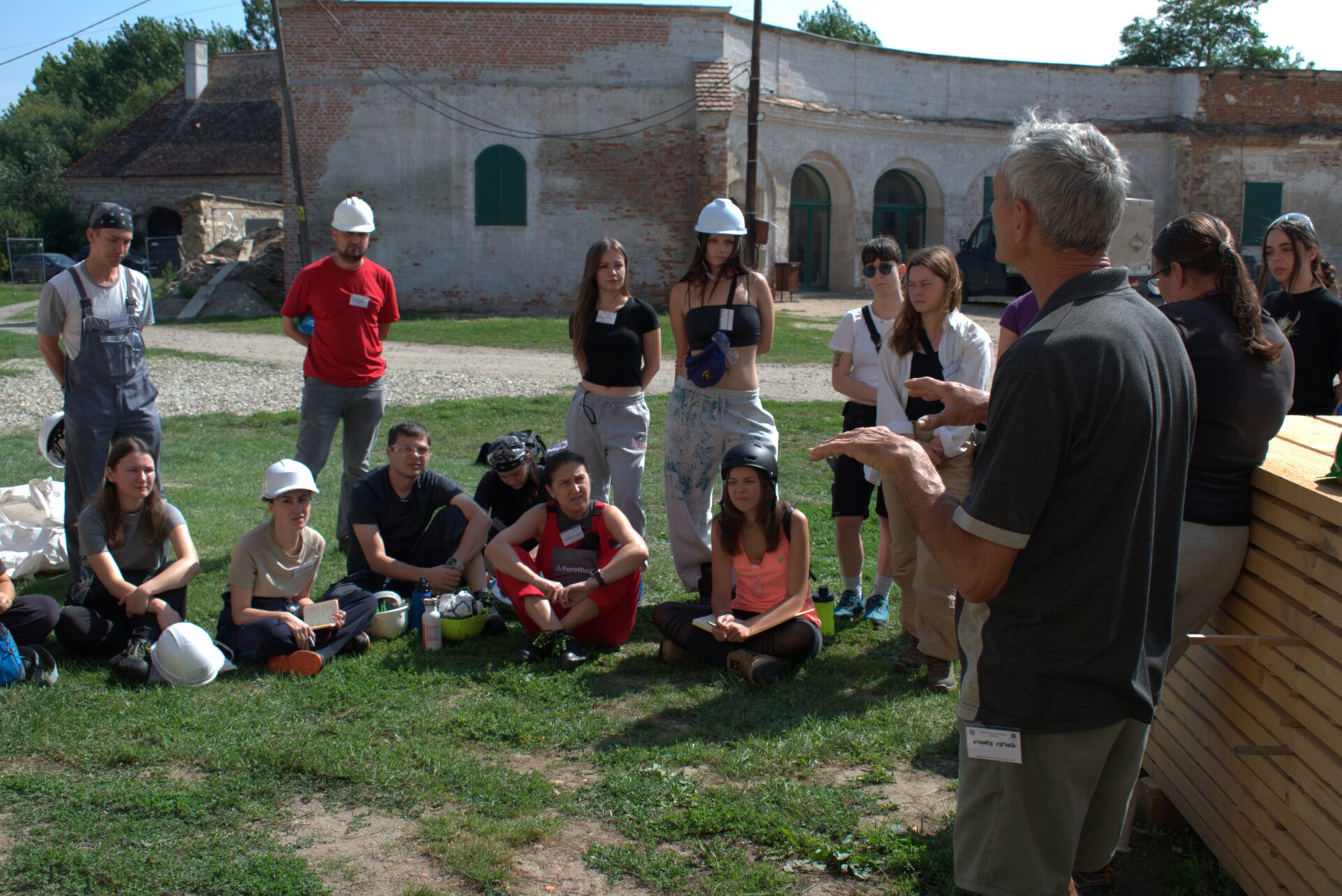
Report: Built Heritage Conservation Training Camp
The Transylvania Trust Foundation organised its built heritage conservation training camp at Bánffy Castle in Bonțida between 17 and 30 August 2025. Participants from two countries (Romania, France) were present, with a total of 25 campers collaborating in the masonry and joinery workshops, gaining hands-on experience in the castle’s restoration process. Our programme primarily targets university students (architects, structural engineers, landscape architects, archaeologists, art historians etc.) and professionals working in the construction industry, but we welcome participants from other fields as well.
The training commenced with a series of theoretical lectures. First, Edith Marczika-Gyöngyösi, Executive Director of the Transylvania Trust Foundation presented the Built Heritage Conservation Training Centre operating at Bánffy Castle in Bonțida. She was followed by architect Nicole Sutton, whose lecture focused on historical building materials, as well as the importance of minimal interventions, on-going maintenance and the compatibility of techniques and materials. Then, art historian Zsuzsanna Eke provided a brief history of Bánffy Castle, complete with a guided tour. Subsequently, architect Endre Ványolós, discussed contemporary urban interventions in the historical environment, and the series concluded with engineer Dorottya Makay’s presentation on structural interventions.
The practical training began after the work safety and health protection instructions, where site manager Márton Bikfalvi and his team of craftsmen guided the participants through the monument conservation processes. Within the masonry workshop, participants worked on the stables and in the northeast tower of the main building under the supervision of experienced trainers. Additionally, they could try their hand at preparing mural decorations, where they learned various techniques, such as fresco, secco, sgraffito and stucco marmorino. The joinery students learned to create various joints and gained proficiency in furniture restoration processes.
In the second week of the camp, geophysicist István Kudó together with geophysicist and geoinformatics engineer Márton Bujdosó presented the theory behind the georadar survey as a non-intrusive investigation method. Following this, the participants got to try the method in practice at the castle grounds.
A study field trip was also included in the programme. Its first stop was the village of Rimetea, where participants saw traditional houses, an 18th-century mill, visited the Ethnographic Museum and the Unitarian Church. Next was the village of Sic, where the team visited the mediaeval Reformed Church and the 18th-century Holy Archangels Michael and Gabriel Orthodox wooden church. The field trip concluded with a walk through the reed beds near Sic.
On the last day of the training, the participants themselves presented to each other, to the craftsmen leading the activities and to the interested public the workshops and the work they had been involved in during the camp. This was followed by a written exam assessing the participants’ knowledge. The evaluations were complemented by feedback from the workshop leaders, and those who met the established criteria received a certificate of achievement.
This project was supported by the Romanian Order of Architects, from the architectural stamp duty, by The King’s Foundation, the National Cultural Fund of Hungary (NKA) and the Communitas Foundation.
The project does not necessarily represent the position of the National Cultural Fund Administration. AFCN is not responsible for the content of the project or how the results of the project may be used. These are entirely the responsibility of the beneficiary of the funding.





